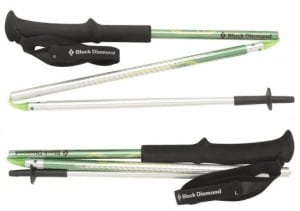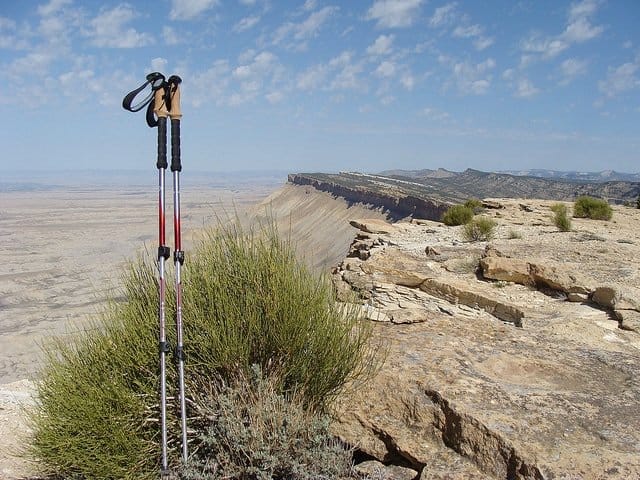It wasn’t until recently that I started using trekking poles. I had never really liked the idea of having my hands full when trying to hike. After a few times of slipping and falling on the trail I decided to give trekking poles a try. In this article I will be discussing trekking poles in-depth.
Uses
- Let your arms help your legs and feet.
- Helped propel you forward and upward.
- Help prevent overuse injuries.
- Reduce the impact of heavy weight.
- Delay fatigue.
- Reduce the stress on your legs by about 25%.
- Help you get better traction when on slick surfaces.
- Help you to get a higher average speed.
- Use them for a medical splint.
- Help you to defend against dogs or other wildlife.
- Use them for tent or tarp poles.
- Use them to “test the waters” to see if it is safe to walk on.
For example:
Check water puddles.
How deep a stream is.
Is there a snake behind those rocks?
Trekking Pole Types
Collapsible/adjustable

Collapsible/adjustable trekking poles can be used for multiple activities such as hiking, snowshoeing, or skiing. These type of trekking poles can be collapsed and stored when needing your hands or when being packed in a suitcase.
These types of trekking poles can be shared among family members because of their adjustability. One thing to note about these is the adjustable mechanism can fail causing the pole to slip down. Also, because of the adjustability the overlapping of material adds extra weight.
Foldable/nonadjustable

Foldable/nonadjustable trekking poles are not as common as adjustable poles. They can only be used by one person for one activity and are lighter than the adjustable poles. They are typically more expensive even though they are not as steady because the folding joints can wobble.
Fixed length poles
Fixed length poles can be harder to find because they are not massively produced. These types of poles are much more steady than foldable or adjustable poles. They are also lighter. Because of their fixed length fixed length poles are not easily stored.
Shaft Materials
Aluminum
Aluminum is more durable but will bend if overleveraged. They are also heavier and can be cold to the touch in colder weather.
Carbon Fiber
Carbon fiber is less durable and more expensive because it weighs less. It does not get cold to the touch in cold weather and is more shock resistant. Carbon fiber will snap if overleveraged rather than bend.
Grips and Straps

Low end trekking poles will have a rubber or plastic grip. This is heavy and can cause blisters. Better grips are made out of high density foam or cork. This is much more comfortable for your hand and lighter in weight.
Most trekking poles come with straps made into the handle. Many people immediately take this strap off. They feel that having your hands strapped to the trekking pole can cause injuries if you were to slip and the trekking pole got stuck. They can also break your pole if you’re unable to let go of it. On the other hand, other people like the straps so that they do not have to hold the grips as tight.
Pole Weight
With trekking poles it is just like your footwear. Just a slight more weight on your trekking poles is the equivalent of much more weight in your backpack. Moving the weight back and forth and constantly picking it up is a lot on you.
If your trekking poles are too heavy your arms will get tired quickly. Trust me, you do not want to be the one on the trail dragging the poles behind you. You would be better off not having trekking poles in this case.
Drawbacks
Trekking poles do have some drawbacks that come with carrying them.
- They can get tangled in bushes and other things.
- The poles can slide on wet rock causing you a false sense of security.
- They can wear your cardiovascular system down faster.
- They cannot be easily stored.
- They get in the way when you want to use your hands for tasks such as taking pictures or snacking.
- They mess up the ground.
Now that I have been using my trekking poles for a while now, I almost never go on a hike without them. I will have to admit I do get more tired when I use them on the trail but it is simply something I will have to work on. I think my poles may be too heavy. I do like the sense of security I have by having a third and fourth point of contact with the ground.
If you found this article helpful please be sure to share it with your fellow hikers. If you have any questions or comments please leave a comment below or contact me via my contact page.
